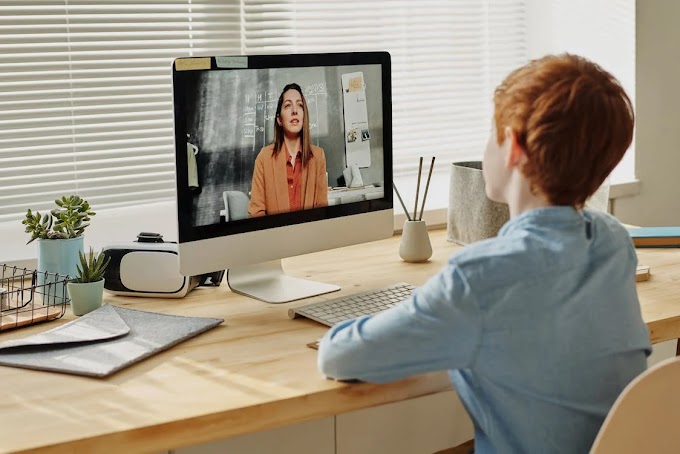Create Dynamic Videos from a Sequence of Images Using MoviePy
Have you ever wanted to turn a sequence of images into a dynamic video? Whether you're creating a time-lapse of a project, a photo slideshow for a special event, or even turning frame-by-frame animations into a smooth video, MoviePy is an excellent tool to make this process simple and efficient.
In this blog post, we’ll walk you through the process of generating a video from a sequence of images using MoviePy, a powerful Python library for video editing. By the end, you’ll know how to convert a collection of images into a seamless video, customize the frame rate, add audio, and even include transitions or effects.
1. Why Generate a Video from Images?
There are many reasons you might want to create a video from a series of images:
- Time-lapses: You can take photos of a subject over time and compile them into a video to show rapid progress (e.g., a flower blooming, construction work, or a cityscape).
- Photo Slideshows: Perfect for weddings, events, or personal projects, creating a video slideshow from images allows you to showcase memories with smooth transitions and music.
- Stop-motion Animations: If you’re creating a stop-motion animation, each frame can be an image that gets converted into a video to create the illusion of movement.
MoviePy simplifies this process by automating the creation of a video from an ordered set of images.
2. Setting Up MoviePy
Before we dive into the code, you'll need to have MoviePy installed. You can install MoviePy using pip:
pip install moviepy
Once MoviePy is installed, you're ready to start generating videos from images.
3. Loading and Sorting the Images
To create a video, you need a sequence of images. These images should ideally be ordered correctly by filename or timestamp (e.g., image001.jpg, image002.jpg, etc.). To load and process them, we’ll use Python’s os module to list the image files in a directory.
Here’s how to load and sort images before turning them into a video:
import os
from moviepy.editor import ImageSequenceClip
def create_video_from_images(image_folder, output_video, fps=30):
# List all the files in the image folder
image_files = [os.path.join(image_folder, f) for f in os.listdir(image_folder) if f.endswith(".jpg")]
# Sort images by filename (assuming filenames are in order like image001.jpg, image002.jpg, ...)
image_files.sort()
# Create a video clip from the image sequence
clip = ImageSequenceClip(image_files, fps=fps)
# Write the result to a video file
clip.write_videofile(output_video, codec="libx264")
# Example usage:
create_video_from_images("path_to_images_folder", "output_video.mp4", fps=24)
Explanation:
image_folder: The directory containing your images.image_files.sort(): Sorts the images by their filenames to ensure they are added in the correct order.fps(frames per second): This controls how fast the images will appear in the video. A higherfpsmeans the video will be faster, while a lowerfpswill create a slower video.ImageSequenceClip(): MoviePy’s function to create a video from a sequence of images.write_videofile(): This function generates the video file with the images.
4. Customizing the Video
Once you’ve successfully created the basic video from your images, you may want to customize it further. Here are a few ways you can enhance your video:
Adjusting the Frame Duration
If you want each image to be displayed for a longer or shorter duration, you can change the fps value when creating the ImageSequenceClip or by controlling the duration per image.
clip = ImageSequenceClip(image_files, durations=[0.5]*len(image_files)) # Each image stays for 0.5 seconds
In this example, every image stays on the screen for 0.5 seconds.
Adding Audio
You can easily add background music or sound to your video. Simply load an audio file and set it as the audio for your video clip:
from moviepy.editor import AudioFileClip
def create_video_with_audio(image_folder, audio_file, output_video, fps=30):
# Load images
image_files = [os.path.join(image_folder, f) for f in os.listdir(image_folder) if f.endswith(".jpg")]
image_files.sort()
# Create video clip from images
clip = ImageSequenceClip(image_files, fps=fps)
# Load the audio file
audio = AudioFileClip(audio_file)
# Set audio for the video clip
clip = clip.set_audio(audio)
# Write the result to a video file
clip.write_videofile(output_video, codec="libx264")
# Example usage:
create_video_with_audio("path_to_images_folder", "background_audio.mp3", "output_with_audio.mp4", fps=24)
This script loads an audio file (background_audio.mp3) and syncs it with the video generated from the images.
Adding Transitions or Effects
If you want to add transitions or effects, such as fade-ins or fade-outs, MoviePy makes it easy to do this. For example, to add a fade-in effect to the video:
from moviepy.editor import vfx
clip = ImageSequenceClip(image_files, fps=fps)
clip = clip.fadein(2) # Fade in over 2 seconds
clip.write_videofile(output_video, codec="libx264")
This will make your video start with a smooth fade-in over the first 2 seconds.
5. Creating a Time-Lapse Video
One of the most popular uses of generating a video from images is creating a time-lapse video. In a time-lapse, you might want to speed up the video by showing each image for a fraction of a second to condense a long period into a short video.
For example, if you have an image every minute, but you want to play the video at 30 frames per second, you can adjust the fps accordingly:
def create_timelapse_video(image_folder, output_video, fps=30):
image_files = [os.path.join(image_folder, f) for f in os.listdir(image_folder) if f.endswith(".jpg")]
image_files.sort()
# Speed up by changing the fps value
clip = ImageSequenceClip(image_files, fps=fps)
# Write the video to the output
clip.write_videofile(output_video, codec="libx264")
# Example usage:
create_timelapse_video("path_to_images_folder", "timelapse_video.mp4", fps=30)
Here, the video will play at 30 frames per second, making the video much faster than the original image capture rate.
Conclusion
Generating a video from a sequence of images is a straightforward process with MoviePy. Whether you’re creating a time-lapse, a photo slideshow, or even a stop-motion animation, MoviePy provides all the tools you need to create high-quality videos. You can customize frame rates, add audio, and even apply special effects or transitions to enhance your videos.
By following the steps outlined in this blog post, you can easily turn a series of images into a dynamic video and share it with others in a variety of formats






0 Comments